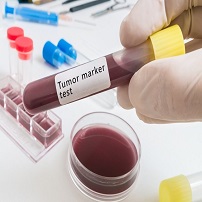 Mesothelioma is a rare, fatal cancer caused by acute or prolonged exposure to asbestos. Asbestos fibers lodge in the pleura, or lining of the lung and cause inflammation, then the growth of mesothelial cancer cells. Treatments fail largely due to the lack of early detection. An international team of researchers at the University of Hawaii may have uncovered the key to early detection of pleural mesothelioma.
Mesothelioma is a rare, fatal cancer caused by acute or prolonged exposure to asbestos. Asbestos fibers lodge in the pleura, or lining of the lung and cause inflammation, then the growth of mesothelial cancer cells. Treatments fail largely due to the lack of early detection. An international team of researchers at the University of Hawaii may have uncovered the key to early detection of pleural mesothelioma.
Dr. Haining Yang lead a team in studying a protein they have labeled High-Mobility Group Box 1 or HMGB1. This protein has been shown to trigger the growth of cancerous mesothelioma cells. The team believes that it can be used in a simple lab test for early detection.
The HMGB1 protein is secreted by mesothelial cells, but also secretes an acetylated isoform of the protein. Asbestos kills normal mesothelial cells, but when the cancer is triggered, only the isoform is secreted. In persons with exposure to asbestos, the HMGB1 will be present, but in those with mesothelioma cancer, the isoform will be present. Because of this, Yang and her team believes that anyone considered high risk could be regularly screened, using the protein as a marker for early detection of cancer.
Yang’s team is not sure if the HMGB1 is the cause of the growth of cancerous cells or a result of them, but believe that if they can develop a simple blood test to detect both the protein and its isoform, they could screen not only for mesothelioma, but other cancers including pancreatic. The problem is that current tests can screen for the HMGB1, but isolating the acetylated isoform requires a more complex test such as the MBEC Assay. One of the key elements of the research conducted by Yang and her team involves developing a simplified test.
One of the key difficulties lies in the rarity of mesothelioma. About 3000 new cases per year are diagnosed. At this relatively low rate, there are fewer researchers involved nationwide and these are scattered among the states. The mesothelioma research field is small, but Dr. Yang and her team are striving to collaborate with as many experts as possible, including those in other fields. The goal is to pool resources and work together to develop effective techniques and therapies.
HMGB1 is present in other cancers, but much higher in cases of mesothelioma. The team believes that the reason is biopersistence, that is, the time frame during which asbestos fibers remain in the lung. They believe that if they can determine why the protein functions in relation to cancer cells as they do, they may interest other cancer researchers and accelerate collaborative research. They hope this will lead to rapid advances in mesothelioma treatment, including the early detection test.
Philadelphia asbestos lawyers at Brookman, Rosenberg, Brown & Sandler have been helping victims of mesothelioma and their families since 1984. We know the terrible impact this cancer can have on families and we fight to hold negligent parties responsible. If you or someone you love has mesothelioma, asbestosis, or asbestos-related cancer, you may be entitled to compensation. For a free review of your case, contact us online or call now 800-369-0899.